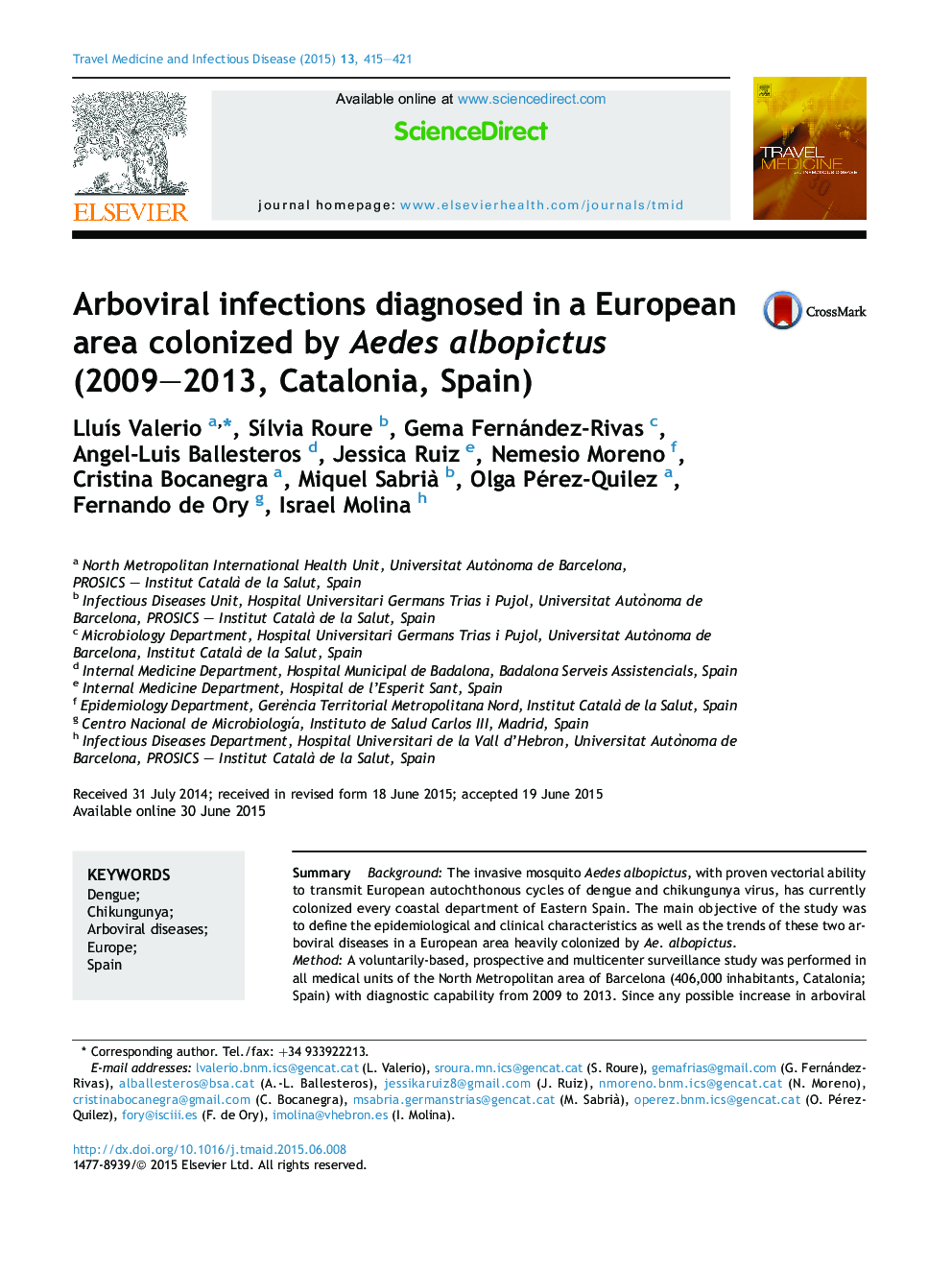| Article ID | Journal | Published Year | Pages | File Type |
|---|---|---|---|---|
| 3392800 | Travel Medicine and Infectious Disease | 2015 | 7 Pages |
SummaryBackgroundThe invasive mosquito Aedes albopictus, with proven vectorial ability to transmit European autochthonous cycles of dengue and chikungunya virus, has currently colonized every coastal department of Eastern Spain. The main objective of the study was to define the epidemiological and clinical characteristics as well as the trends of these two arboviral diseases in a European area heavily colonized by Ae. albopictus.MethodA voluntarily-based, prospective and multicenter surveillance study was performed in all medical units of the North Metropolitan area of Barcelona (406,000 inhabitants, Catalonia; Spain) with diagnostic capability from 2009 to 2013. Since any possible increase in arboviral cases could be justified by changes in traveling behaviors along the study period (especially longer trips) the trend showed by these two arboviral diseases was compared with that displayed by malaria cases during the same period.Results38 out of 52 (73.1%) suspected cases could be serologically confirmed (IgM+): dengue 34/38 (89.5%) and chikungunya 4/38 (11.5%). No autochthonous cases were identified. The overall incidence of both arboviruses was 0.19 cases/10,000 inhabitants-year (95% CI: 0.07–0.3); dengue = 0.17 cases/10,000 inhabitants-year (95% CI: 0.05–0.3), and chikungunya = 0.02 cases/10,000 inhabitants-year (95% CI: 0.001–0.03). The Incidence Relative Risk of arboviral disease between 2009 and 2013 shown a significant trend (IRR = 1.27. IC 95%: 1.01–1.59; p = 0.043) when compared with that displayed by malaria (IRR = 1.04. IC 95%: 0.924–1.192). If no unexpected circumstances concur, the arboviral disease incidence tax would equal that of malaria about 2021–2022.ConclusionsThe incidence of dengue and chikungunya is steadily increasing in the North Metropolitan area of Barcelona, a region densely colonized by Ae. albopictus, at the entire expense of imported cases (especially Visiting Friends and Relatives travelers). To date, no secondary autochthonous cases have been identified and, thus, they have not taken part in this rise.
